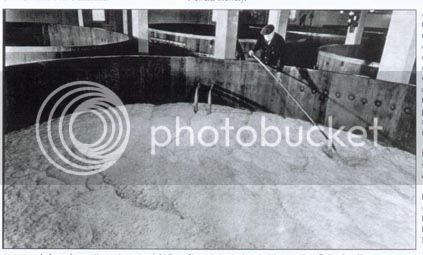I do not know when rinsing yeast with boiled and chilled water became the rage (it clearly occurred while I was on hiatus from the hobby), but it is a completely unnecessary step that does more harm than good. Boiled water isn't absolutely sterile. Microflora spores can and do survive 100C moist heat. To kill spores, one must autoclave (pressure cook at 121C @ 15 PSI) water for at least fifteen minutes. Additionally, the pH of water is much higher than that of beer, which allows pH-sensitive spores to germinate. A yeast culture takes over a batch of wort by consuming all of the dissolved oxygen, lowering the pH, and producing alcohol when it shifts from respiration to fermentation. Adding oxygen, raising the pH, or removing the alcohol removes the pitching yeast's protective barrier.
Many amateur brewers confuse yeast rinsing with proper yeast washing. Proper yeast washing is performed with an acidified solution. The purpose of proper yeast washing is to drive the pH of an infected culture down low enough kill off (or at least seriously weaken) everything but the pitching yeast. The pitching yeast is also weakened during the process; therefore, yeast washing is often little more than a band-aid. One usually has to go back and propagate new pitching yeast from a slant or a plate using aseptic transfer technique to perform the first inoculation.
All one has to do to crop yeast from the bottom of a fermentation vessel is to scoop the yeast out with a sanitized spoon and store it in a covered sanitized jar. If one uses a carboy as a primary fermentation vessel like we do in the United States, one can crop yeast by leaving just enough liquid behind while racking to be able swirl the sediment into solution, waiting a couple of minutes, and decanting the liquid fraction into a sanitized jar after wiping the mouth of the carboy with an ethanol soaked cotton ball. In both cases, it is better to leave the yeast under green beer than it is to leave it under boiled water. As mentioned above, the pH of green beer is significantly lower than that of boiled tap water, especially alkaline tap water.
On brew day, the stale beer should be replaced with fresh wort from the batch that one just brewed before the contents of the jar are swirled into suspension. One should wait a couple of minutes for the heaviest fraction to settle before pitching the liquid fraction into one's new batch of wort. If performed properly, most of the trub, hop particles, and dead yeast cells will be left in the jar after the liquid fraction has been decanted.





















![BREWING THERMOMETER STICKERS ACCURATELY MONITOR FERMENTING BEER & WINE LIQUID TEMPERATURES 5PCS HOME BREW SPIRITS WINE LCD ADHESIVE [US]](https://m.media-amazon.com/images/I/311DDjo2X3L._SL500_.jpg)




















